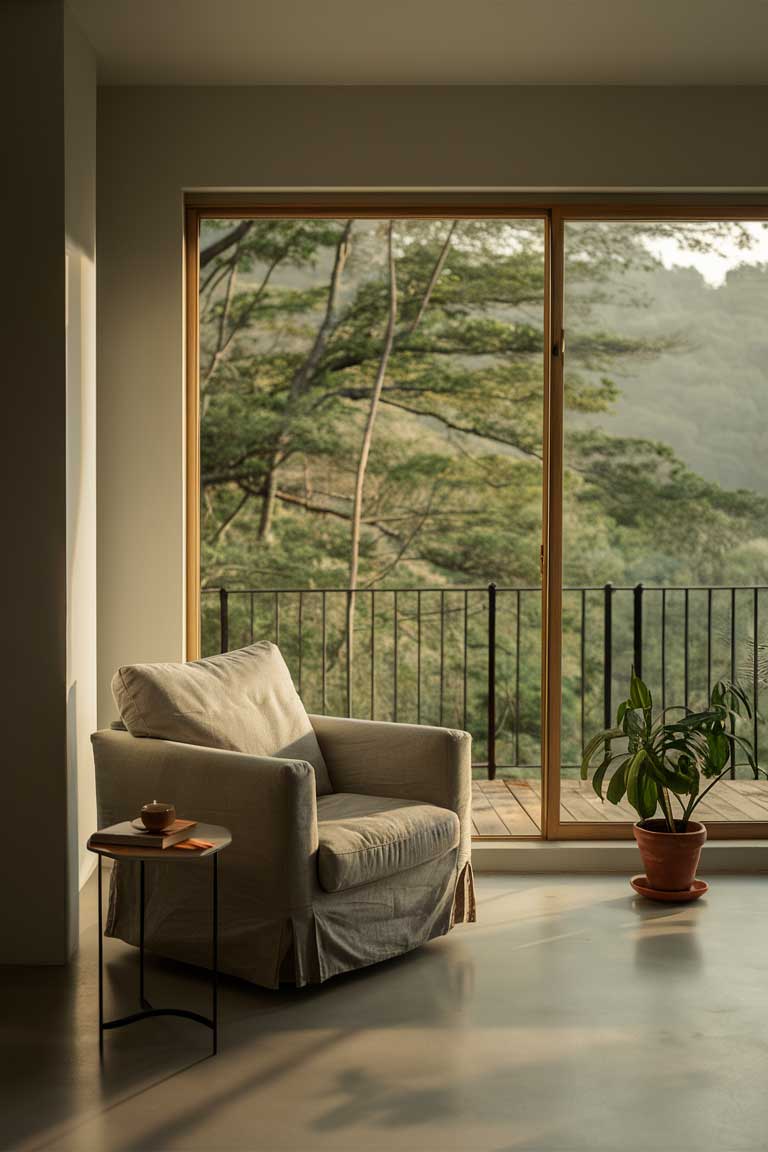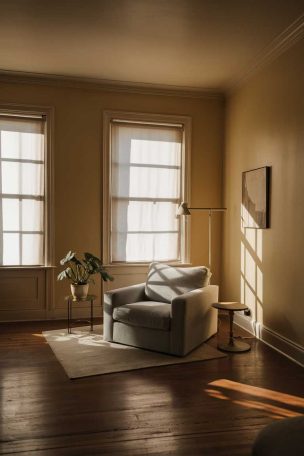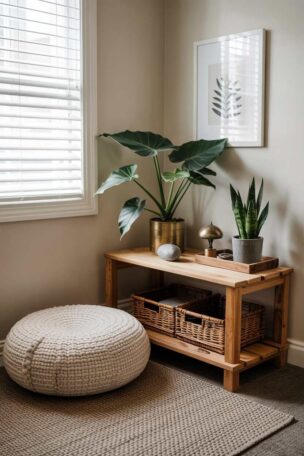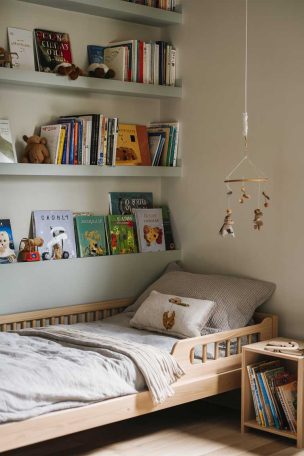In our fast-paced, consumer-driven world, the concept of minimalism has gained significant traction. But what exactly are minimalist habits, and why should we care? At its core, minimalism is about intentionally focusing on what truly matters and removing the excess that clutters our lives – both physically and mentally.
Minimalist habits are the practical, day-to-day actions that help us embody this philosophy. They’re not about deprivation or living with bare essentials but rather about making mindful choices that align with our values and priorities. By adopting these habits, we can create space for what’s truly important, reduce stress, and find greater contentment in our daily lives.
Let’s dive into the core principles of minimalism and explore how we can incorporate these habits into our routines for a more fulfilling life.
The Core Principles of Minimalism
Minimalism isn’t a one-size-fits-all lifestyle. It’s a flexible philosophy built on three main principles:
- Simplicity: Stripping away the unnecessary to focus on the essential.
- Intentionality: Making conscious choices about what we allow into our lives.
- Focus on what truly matters: Aligning our actions and possessions with our values and goals.
These principles form the foundation for the minimalist habits we’ll explore. By keeping them in mind, we can navigate the journey towards a more minimalist lifestyle with clarity and purpose.
Essential Minimalist Habits for Daily Life
1. Regular Decluttering
One of the cornerstones of minimalism is maintaining a clutter-free environment. Regular decluttering isn’t just about tidying up – it’s a practice that can profoundly impact our mental clarity and focus.
To make decluttering a habit, set a recurring schedule. This could be weekly for high-traffic areas like your desk or kitchen and monthly for larger spaces like closets or storage areas. The key is consistency.
When decluttering, focus on specific areas each session. This approach prevents you from being overwhelmed and allows you to see tangible progress. You might tackle your bookshelf one week and your wardrobe the next.
There are several effective techniques for decluttering:
- The KonMari method: Ask yourself if each item sparks joy. If not, thank it for its service and let it go.
- The four-box method: Sort items into ‘keep’, ‘donate’, ‘sell’, and ‘trash’ boxes.
Remember, decluttering isn’t just about getting rid of things – it’s about being mindful of what you choose to keep. As you declutter, consider the functionality and joy each item brings to your life.
Once you’ve decided what to let go, dispose of items responsibly:
- Donate usable items to local charities
- Sell valuable items on online marketplaces
- Recycle what you can at appropriate recycling centers
By making decluttering a regular habit, you’ll maintain a space that feels light, organized, and purposeful.
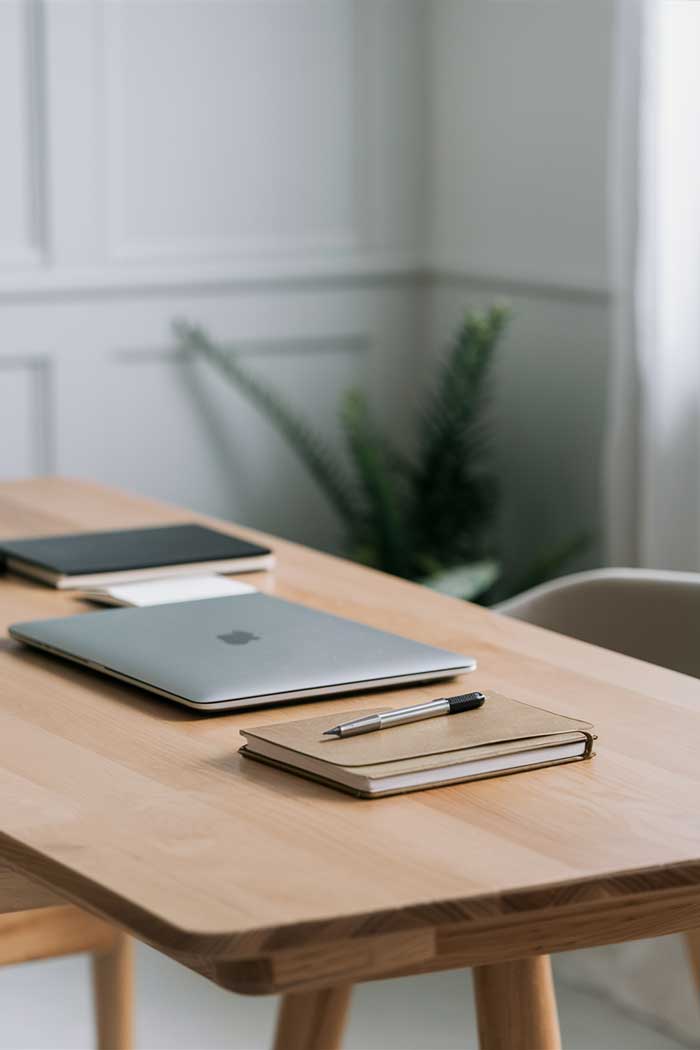
2. Mindful Consumption
In a world that constantly encourages us to buy more, practicing mindful consumption is a radical act. This habit is about being intentional with what we bring into our lives, considering the long-term impact of our purchases.
One effective strategy is the “One In, One Out” rule. For every new item you bring home, commit to removing one item. This simple practice helps maintain balance and encourages you to think twice before making a purchase.
For non-essential items, try implementing the 30-day rule. When you feel the urge to buy something, write it down and wait 30 days. If you still want or need it after this period, then consider purchasing it. Often, you’ll find that the desire has passed, saving you from impulse buys.
When you do make purchases, focus on quality over quantity. Invest in well-made items that will last longer, even if they cost more upfront. This approach not only reduces waste but often saves money in the long run.
Before making a purchase, take time to research brands’ sustainability practices. Look for companies that prioritize ethical production methods and use eco-friendly materials. This extra step ensures that your consumption aligns with your values.
By cultivating mindful consumption habits, you’ll not only simplify your life but also contribute to a more sustainable world.
3. Simplify Your Wardrobe
A cluttered closet can be a daily source of stress and decision fatigue. Simplifying your wardrobe through the concept of a capsule wardrobe can streamline your mornings and help you feel more put together with less effort.
To create a capsule wardrobe:
- Choose a cohesive color palette. This ensures that most of your clothes can be mixed and matched easily.
- Select versatile, high-quality pieces that can be dressed up or down.
- Focus on classic styles that won’t quickly go out of fashion.
A typical capsule wardrobe might include:
- 2-3 pairs of well-fitting jeans
- A few neutral T-shirts and blouses
- 1-2 blazers or jackets
- A versatile dress
- A selection of accessories to add variety
Implement a seasonal rotation system to keep your wardrobe fresh without overcrowding your closet. Store off-season clothes in labeled boxes or vacuum-sealed bags.
To maximize outfit variations with a smaller wardrobe, get creative with accessories. A scarf, statement necklace, or different shoes can completely change the look of an outfit.
Remember, the goal isn’t to have a boring wardrobe but to have a thoughtfully curated collection of clothes that you love and wear regularly. This approach not only simplifies your daily routine but also reduces the environmental impact of fast fashion.
4. Digital Minimalism
In our increasingly digital world, clutter isn’t just physical—it’s digital, too. Digital minimalism is about creating intentional and meaningful relationships with technology.
Start by decluttering your digital space:
- Unsubscribe from unnecessary emails and newsletters. Tools like Unroll.me can make this process easier.
- Organize your files using a consistent naming system. Consider using broad categories like “Work,” “Personal,” and “Creative Projects” with subcategories as needed.
- Delete unused apps and old files. Be ruthless – if you haven’t used an app in the last six months, do you really need it?
Setting boundaries for technology use is crucial:
- Implement app blockers during work hours to increase productivity. Tools like Freedom or Focus@Will can help.
- Create tech-free zones in your home, such as the dining table or bedroom.
- Practice digital detox weekends. Try turning off notifications or even leaving your phone at home for short periods.
Remember, the goal of digital minimalism isn’t to eliminate technology but to use it more intentionally. By decluttering your digital life and setting healthy boundaries, you can reduce overwhelm and create more space for meaningful online and offline experiences.
5. Single-Tasking and Focus
In a world that often glorifies multitasking, embracing single-tasking can be revolutionary. Focusing on one task at a time not only improves the quality of your work but also reduces stress and increases satisfaction.
Try these techniques for improving focus:
- The Pomodoro Technique: Work in focused 25-minute bursts, followed by short breaks.
- Time-blocking: Schedule specific tasks for set periods throughout your day.
Creating a distraction-free work environment is crucial for effective single-tasking:
- Invest in noise-cancelling headphones to block out ambient noise.
- Set up a dedicated workspace, even if it’s just a corner of a room.
- Keep your desk minimalist, with only the tools you need for your current task.
Remember, single-tasking is a skill that requires practice. Start small, perhaps with 15-minute focused sessions, and gradually increase the duration as your concentration improves.
By embracing single-tasking, you’ll likely find that you accomplish more in less time, with greater accuracy and enjoyment.
6. Gratitude Practice
Cultivating gratitude is a powerful minimalist habit that shifts our focus from what we lack to what we have. This practice can significantly boost our overall well-being and contentment.
Start a daily gratitude journal. Each day, write down three things you’re grateful for. They don’t have to be big things – it could be as simple as a warm cup of coffee or a kind word from a friend.
Incorporate gratitude into your daily routine:
- Begin your day by thinking of something you’re looking forward to.
- End your day by reflecting on three good things that happened.
- Express appreciation to others regularly, whether through a quick text or a heartfelt conversation.
Practice mindful appreciation during daily activities. For example, while eating, take a moment to appreciate the flavors, textures, and the effort that went into preparing the meal.
Remember, gratitude isn’t about ignoring problems or forcing positivity. It’s about acknowledging the good alongside the challenges, helping us maintain a balanced perspective.
By making gratitude a habit, you’ll likely find yourself feeling more content with what you have, reducing the urge to accumulate more stuff or constantly seek the next big thing.
7. Prioritize Experiences Over Possessions
A key tenet of minimalism is the idea that experiences bring more lasting happiness than material possessions. By shifting our focus (and often our spending) from things to experiences, we can create richer, more fulfilling lives.
Start by budgeting for experiences rather than material goods. This might mean setting aside money for travel, concerts, classes, or other activities that align with your interests and values.
Create a bucket list of meaningful experiences you’d like to have. This could include learning a new skill, visiting a particular place, or accomplishing a personal goal. Having this list can help guide your decisions and keep you focused on what truly matters to you.
Don’t forget to document and reflect on your experiences. This doesn’t mean obsessively photographing everything, but rather taking the time to journal, share stories with friends, or create mementos that help you relive and appreciate these moments.
Remember, experiences don’t always have to be grand or expensive. A nature walk, a home-cooked meal with friends, or a day exploring your own city can be just as enriching as a far-flung adventure.
By prioritizing experiences, you’re not just accumulating memories – you’re growing, learning, and connecting with others and the world around you.

8. Learn to Say No
One of the most powerful minimalist habits is learning to say no. In a world full of obligations and opportunities, the ability to decline what doesn’t serve you is crucial for maintaining focus on what truly matters.
Assess commitments using the “Hell Yeah or No” principle. If something doesn’t excite you or align with your goals, it’s okay to decline. This doesn’t mean saying no to everything but rather being selective about where you invest your time and energy.
Develop polite but firm ways to decline invitations or requests. For example:
- “Thank you for thinking of me, but I’m not able to commit to that right now.”
- “I appreciate the offer, but it doesn’t align with my current priorities.”
Regularly review and prune your commitments. Set aside time every few months to assess your ongoing obligations and consider which ones still serve you.
Remember, saying no to one thing means saying yes to something else – often, it means saying yes to your own well-being, goals, and values.
By mastering the art of saying no, you create space in your life for what truly matters, reducing stress and increasing fulfillment.
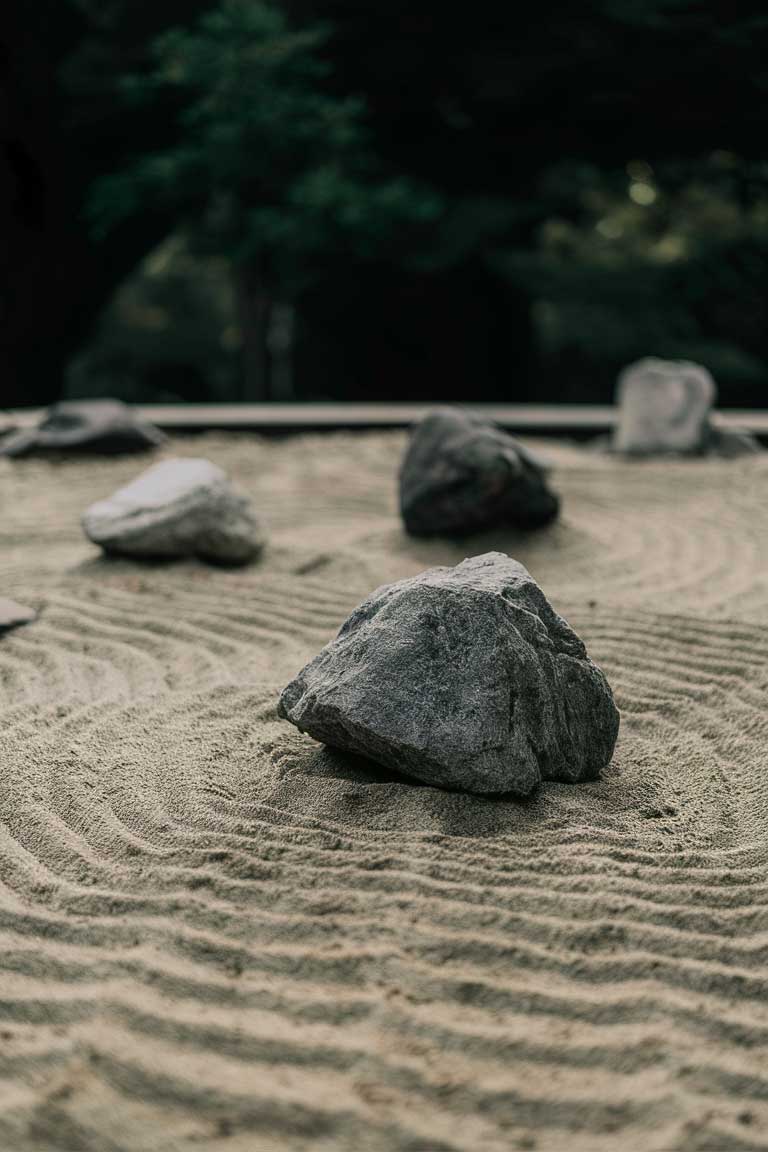
Implementing Minimalist Habits
Starting Small
Embarking on a minimalist journey can feel overwhelming, but remember – it’s not about perfection, it’s about progress. The key is to start small and build momentum.
Choose one habit to focus on for 30 days. This could be decluttering for 10 minutes each day, practicing gratitude, or implementing a capsule wardrobe. By focusing on one habit at a time, you’re more likely to stick with it and see real change.
Track your progress using habit-tracking apps or journals. Seeing your streak grow can be incredibly motivating. Apps like Habitica or Streaks can gamify the process, making it more engaging.
Celebrate small wins along the way. Did you declutter a drawer? Resist an impulse purchase? Take a moment to acknowledge these victories, no matter how small they seem.
Remember, forming new habits takes time. Be patient with yourself and focus on consistency rather than perfection.
Gradually Expanding Your Practice
As you become comfortable with your initial minimalist habits, you can start to expand your practice. Add new habits incrementally, perhaps one new habit every month or two.
Reassess and adjust your habits quarterly. What’s working well? What’s still challenging? Be willing to adapt your approach based on your experiences and changing circumstances.
Consider joining minimalist communities for support and inspiration. Online forums, local meetups, or even a minimalism-focused book club can provide encouragement and fresh ideas.
Overcoming Common Challenges
As you embrace minimalist habits, you’re likely to encounter some challenges. Here are some common ones and strategies to overcome them:
1. Dealing with sentimental items:
- Take photos of sentimental items before letting them go.
- Keep a small “memory box” for truly irreplaceable items.
- Remember that memories reside in you, not in objects.
2. Managing shared spaces with non-minimalist family members:
- Lead by example rather than trying to force change.
- Designate specific areas as your minimalist spaces.
- Have open conversations about your goals and compromise where necessary.
3. Balancing minimalism with hobbies and collections:
- Focus on quality over quantity in your collections.
- Regularly reassess your hobby supplies and keep only what you actively use.
- Consider digital alternatives where possible (e.g., e-books for avid readers).
Remember, minimalism looks different for everyone. The goal is to find a balance that works for you and enhances your life.
The Long-Term Benefits of Minimalist Habits
Adopting minimalist habits isn’t just about having a tidier space or a simpler schedule. Over time, these practices can lead to profound changes in various aspects of your life:
- Reduced stress and anxiety: With less clutter and fewer commitments, many people find their overall stress levels decrease.
- Increased productivity and focus: By eliminating distractions and practicing single-tasking, you may find you’re able to accomplish more in less time.
- Financial benefits and mindful spending: Minimalist habits often lead to reduced consumption and more intentional purchasing decisions, potentially improving your financial health.
- Environmental impact and sustainability: By consuming less and choosing quality over quantity, you’re likely to reduce your environmental footprint.
- Improved relationships and social connections: With more time and mental space, many people find they’re able to invest more in meaningful relationships.
These benefits often compound over time. As you continue to practice minimalist habits, you may find that your definition of what’s “essential” evolves, leading to even greater simplicity and contentment.
Conclusion: Embracing a Minimalist Mindset Beyond Habits
As we’ve explored, minimalist habits can touch every aspect of our lives, from our physical spaces to our digital realms, from our wardrobes to our schedules. But perhaps the most profound impact of these habits is how they shape our mindset.
Over time, practicing minimalism cultivates a greater awareness of what truly adds value to our lives. We become more intentional in our choices, more appreciative of what we have, and more focused on what really matters to us.
This mindset shift is the real power of minimalism. It’s not about living with less for the sake of it, but about making room for more – more joy, more purpose, more meaningful experiences and relationships.
As you continue on your minimalist journey, remember that it’s a personal path. What works for one person may not work for another. Be open to experimenting, adjusting, and finding your own unique balance. The goal isn’t to fit into someone else’s definition of minimalism but to create a life that feels simpler, more intentional, and more fulfilling to you.

